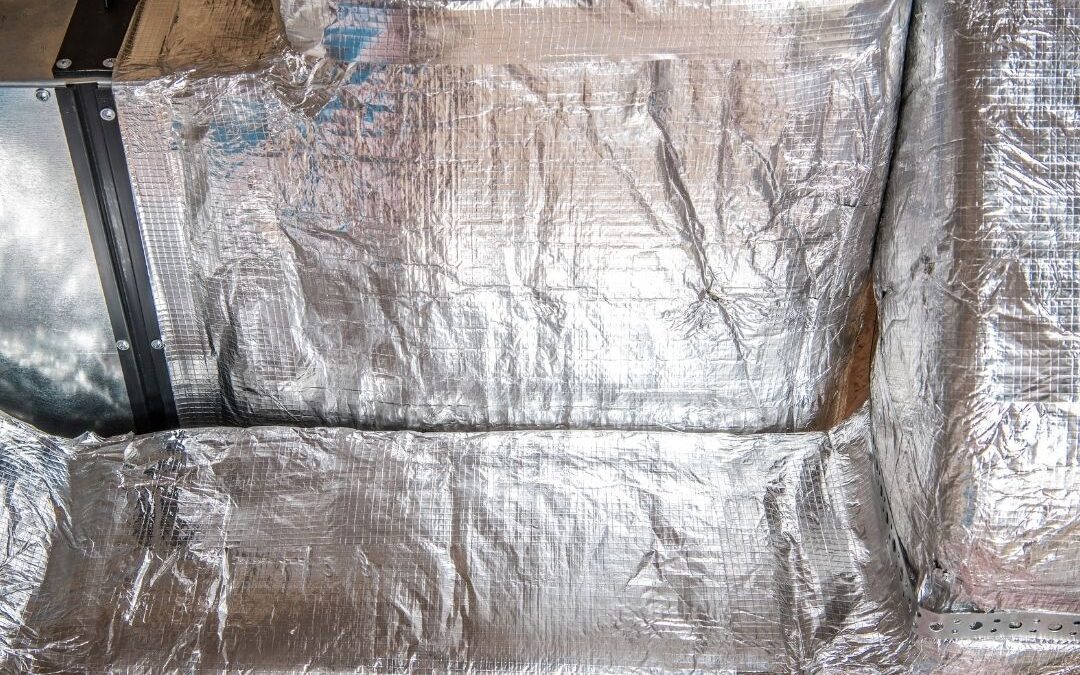Ductwork sweating is standard in homes, particularly in humid climates like North Charleston, SC. It may seem like a minor problem, but if unchecked, ductwork sweating can seriously damage your home and HVAC system, affecting your and your family’s overall comfort, health, and safety. Understanding what causes this issue and how to prevent it can save you from costly repairs and improve the overall efficiency of your HVAC system.
What is Ductwork Sweating?
Ductwork sweating occurs when condensation forms on the exterior of your air ducts. This can happen when cold air inside the ducts meets the warm, humid air outside. The temperature difference causes the moisture in the air to condense on the duct surface, much like duct condensation, like how a cold drink sweats on a hot day. This excess moisture can accumulate, leading to more severe problems such as ceiling leaks, water damage, and mold growth.
Why Does Ductwork Sweat?
The primary reason ductwork sweats is temperature differences between the cold air circulating through the ducts and the warm air surrounding them. This effect is even more pronounced in areas like North Charleston, where high humidity is common. Moist air holds more water vapor, so condensation forms quickly when it comes into contact with the cold surface of your ducts. Poor insulation and air leaks can exacerbate the issue, as these factors increase the exposure of duct leaks to warm air.
Common Symptoms of Ductwork Sweating
If you notice signs in your home, it could indicate that your ductwork is sweating. One of the most visible symptoms is water pooling near vents or on ceilings, especially in areas where the ductwork passes through attics or crawl spaces. You may also observe damp spots in outdoor air around your AC ducts or a noticeable increase in indoor humidity levels. Left untreated, this can lead to mold growth, ceiling stains, or a musty smell throughout the house.
Risks Associated with Ductwork Sweating
Ignoring sweating ducts can lead to various issues, some of which can become severe. The most immediate risk is water damage to your ceilings or walls, mainly if excessive condensation goes unnoticed for an extended period. Moisture around ducts also creates the perfect breeding ground for mold, which poses health risks to your family, especially those with allergies or respiratory problems. Additionally, moisture can damage the insulation around your ducts and reduce the efficiency of your HVAC system, driving up energy bills.
How Climate in Charleston, SC Affects Ductwork
In a city like North Charleston, the climate plays a significant role in causing ductwork sweating. High relative humidity and levels are common, especially in the summer when air conditioning units work overtime. The combination of moist air and frequent temperature fluctuations makes homes in this area particularly susceptible to condensation on metal ductwork. Coastal humidity often amplifies the problem, causing even well-maintained HVAC systems to struggle with ductwork sweating.
Preventative Measures for Ductwork Sweating
Fortunately, there are ways to prevent ductwork from sweating. Proper insulation is critical; wrapping ducts in vapor barrier insulation can prevent warm air from encountering cold air temperatures in the ducts, reducing condensation. Ensuring all air leaks are sealed tightly will also help, as leaks allow humid air to enter and cause sweating. Another necessary measure is managing your home’s indoor humidity using a dehumidifier or running your air conditioning system at an optimal temperature to reduce excess moisture.
Solutions for Fixing Sweating Ductwork
Several solutions can help fix the problem if your ducts are already sweating. Start by your air conditioner checking your HVAC system for any issues, such as clogged air filters, which can lead to excess moisture in the air. Upgrading your insulation may be necessary, particularly if your ducts are in unconditioned spaces like attics. Installing a dehumidifier can also reduce indoor humidity levels and prevent condensation. In severe cases, you may need to consider professional air duct sealing to stop warm, moist air from infiltrating the ducts.
When to Call a Professional HVAC Technician
Whilesome issues with ductwork sweating can be addressed with DIY solutions, there are times when professional help is essential. If you’re dealing with persistent water damage, mold, or ceiling leaks, it’s time to call a qualified HVAC technician. A professional can inspect your system, check for any underlying issues, and recommend the most effective solutions. Local HVAC companies in North Charleston, SC, are familiar with the area’s climate and can provide tailored solutions to reduce the humidity and prevent future sweating ducts.
How to Keep Your HVAC System Running Efficiently
Ductwork sweating is a common issue, especially in humid areas like North Charleston, but it can be managed with proper preventative measures and timely repairs. Ensuring that your ducts are properly insulated, addressing leaks, and maintaining optimal indoor humidity levels will keep your HVAC system running efficiently and help you avoid costly repairs. Routine HVAC maintenance tasks, including regular system cleanings, testing, calibration, and checking air filters, are essential to preventing ductwork condensation problems. By addressing ductwork sweating early, you can extend your HVAC system’s lifespan and ensure your home’s comfort and safety. Contact us today to request more information or schedule an appointment for ductwork repair or replacement services!

